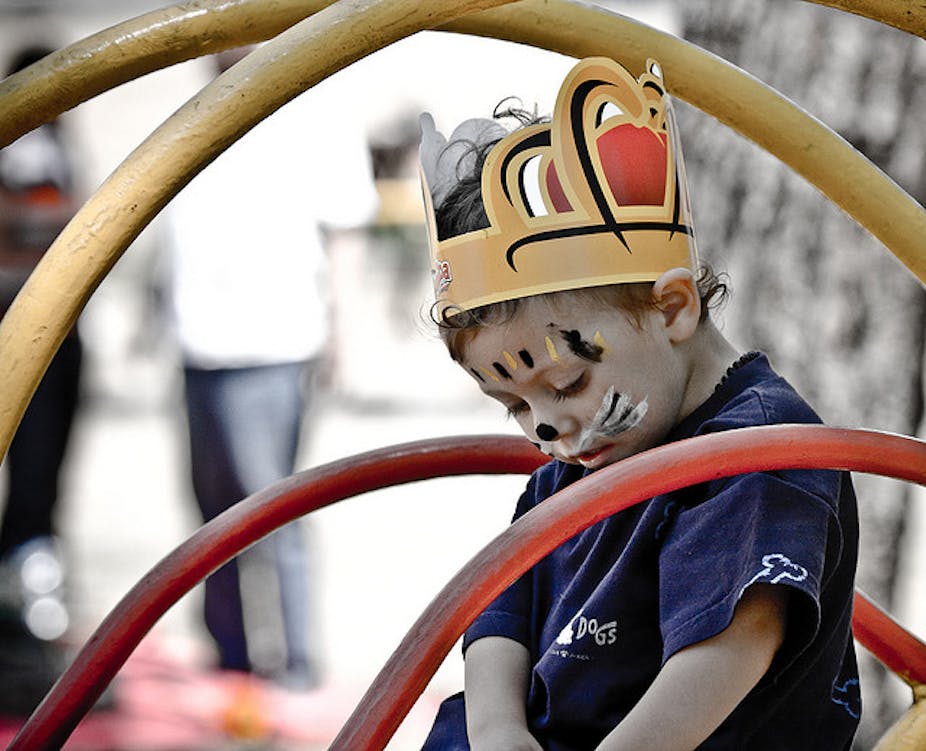MATTERS OF THE MIND – a series which examines the clinician’s bible for diagnosing mental disorders, the DSM, and the controversy surrounding the forthcoming fifth edition.
For autistic people and their families, getting an autism diagnosis is just the first step in a long struggle to access much-needed intervention, support, and appropriate education.
In Australia, as in many countries, autism diagnoses are made according to criteria laid out in the Diagnostic and Statistical Manual of Mental Disorders (DSM). The latest update to the manual, the [DSM-5](http://www.dsm5.org/Pages/Default.aspx, is due for publication in May 2013 and will bring significant changes to the definition and diagnosis of autism.
These changes reflect a continually evolving understanding of autism, as well as a desire to make autism diagnosis simpler and more reliable.
But the DSM-5 remains highly controversial. In a recent letter to the Journal of Autism and Developmental Disorders, a group of 30 autism researchers called for the changes to be postponed until their real world implications are better understood.
DSM-IV
The current edition of the diagnostic rules, the DSM-IV, has been in force since 1994 and is certainly ripe for an overhaul.
Under the DSM-IV, autism diagnosis involves a complex and confusing “pick'n'mix” process. The manual describes 12 autistic “symptoms” divided into three broad categories: social interaction, communication, and repetitive and restricted behaviours. Depending on the particular combination of symptoms present, a person may be given a diagnosis of autistic disorder, Asperger’s disorder, or PDD-NOS (pervasive developmental disorder not otherwise specified).
But these diagnoses are not applied consistently in clinical practice. A recent study found that the clinic where a child goes to be diagnosed is one of the best predictors of the diagnosis they ultimately receive.

DSM-5
The DSM-5 brings two major simplifications: the three diagnoses will be rolled into a single diagnosis, autism spectrum disorder; and social and communication difficulties will be merged into a single category.
Most researchers agree the changes make sense, at least in theory. But there are genuine concerns that some people, particularly those with Asperger’s or PDD-NOS, may miss out on a diagnosis - and access to the support they need.
In a 2011 [study](http://crackingtheenigma.blogspot.com.au/2011/05/what-is-pdd-nos.html, Will Mandy and colleagues at University College London identified a subgroup of children who experience serious social and communication difficulties but don’t show repetitive or restricted behaviours. Under the DSM-IV, they qualify for a diagnosis of PDD-NOS. Under the DSM-5, they would probably miss out. They might qualify for a new diagnosis, social communication disorder, but there are currently no guarantees that assistance will be available for people with this diagnosis.
Effects of the DSM-5 on autism rates
These fears appeared to be confirmed by a study published earlier this year by James McPartland and colleagues at Yale University. By recoding data collected during the development of the DSM-IV, they determined that many kids diagnosed with Asperger’s or PDD-NOS would not meet the new DSM-5 criteria.
However, the Yale study’s recoding is problematic because the items in the new DSM-5 criteria don’t neatly map onto the questions that were asked during development of the DSM-IV.
More recently, a paper published by Marisela Huerta and colleagues at Cornell University reached very different conclusions. The Cornell group recoded information from two “gold standard” diagnostic tools and, in contrast to the Yale study, found that 96% of children originally diagnosed with Asperger’s or PDD-NOS would meet DSM-5 criteria for autism spectrum disorder.
But again there are concerns. The same recoding process also gave the majority of non-autistic children an autism spectrum disorder diagnosis.
Perhaps the clearest evidence to date comes from a relatively small study, conducted by Vicki Gibbs and colleagues at Autism Spectrum Australia. Rather than recoding old data, they used DSM-IV and DSM-5 criteria to assess 132 children referred to their diagnostic team. Thirty-four of the children received a DSM-IV diagnosis of PDD-NOS, but only half of these met criteria for Autism Spectrum Disorder in the DSM-5.
DSM 5.x
Clearly, the issues surrounding autism and the DSM-5 are far from settled. Official “[field trials](http://dsmfacts.org/issue-accuracy/wall-street-journal-gets-it-right/](http://dsmfacts.org/issue-accuracy/wall-street-journal-gets-it-right/)” of the DSM-5 are currently underway. However, the true consequences may not become apparent until after the manual comes into force. A welcome change from previous editions is that DSM-5 will be regularly updated, so we can look forward to bug-fixes in DSM-5.1.
And despite all the fuss, it’s possible that nothing much will change. As a number of practising clinicians have told me, their main objective is to address the person’s needs. Diagnosis is a means to an end and the proposed changes still allow a lot of flexibility in interpretation.
More than anything, the DSM-5 debate highlights the subjective and somewhat arbitrary nature of autism diagnosis and definitions. In a revealing commentary, the DSM-5 neurodevelopmental disorders work group wrote of the need to evaluate DSM-5 against “the true gold standard of expert clinical diagnoses”. For now at least, autism diagnosis remains an art rather than a science.
This is the seventh part of our series Matters of the Mind. To read the other instalments, follow the links below:
Part one: Explainer: what is the DSM and how are mental disorders diagnosed?
Part two: Forget talking, just fill a script: how modern psychiatry lost its mind
Part three: Strange or just plain weird? Cultural variation in mental illness
Part four: Don’t pull your hair out over trichotillomania
Part five: When stuff gets in the way of life: hoarding and the DSM-5
Part six: Psychiatric labels and kids: benefits, side-effects and confusion
Part eight: Depression, drugs and the DSM: a tale of self-interest and public outrage
Part nine: Why prolonged grief should be listed as a mental disorder)

